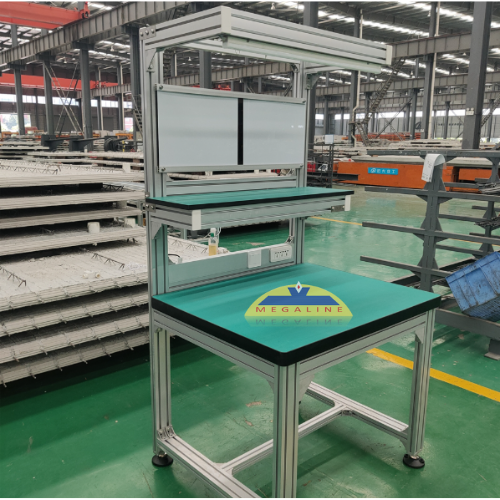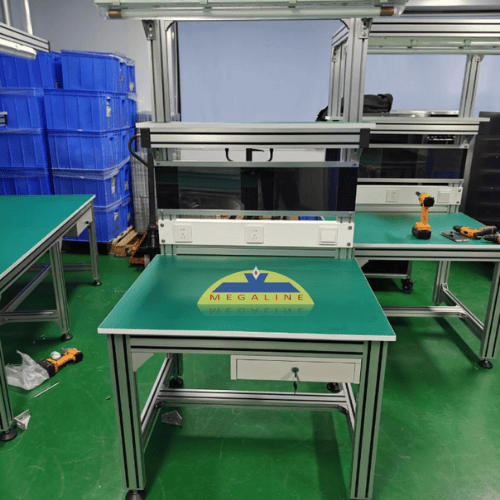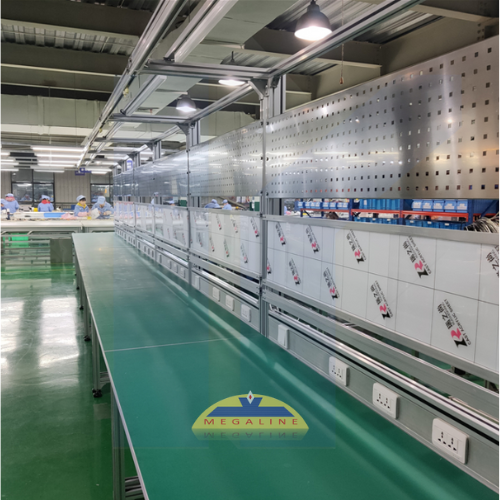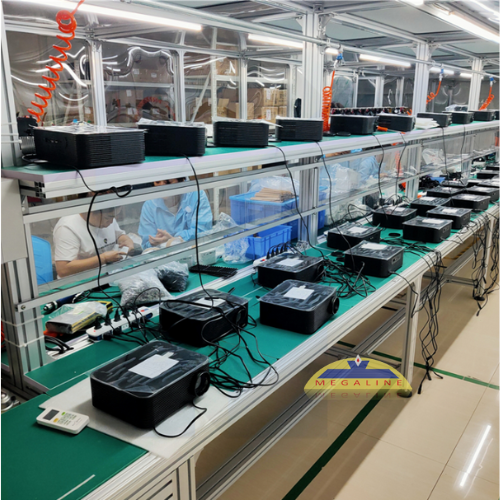DA NANG: 126 Dien Bien Phu, Thanh Khe, Da Nang
HO CHI MINH: 140 Vo Van Kiet, District 1, Ho Chi Minh
Assembly Processing
Assembly Processing
Assembly Processing
Assembly Processing
Assembly Processing
Assembly Processing
Assembly Processing
A workbench is an essential piece of equipment in factories, industrial zones, laboratories, and research centers. With its specialized design, the workbench provides maximum support for workers during the assembly, inspection, measurement, and production of goods.
Workbenches are made from various materials such as powder-coated steel, stainless steel, aluminum profiles, or industrial wood, depending on the specific industry requirements. Additionally, they can be equipped with accessories like lighting, tool shelves, drawers, and anti-static systems to enhance work efficiency.
Although workbench designs can vary depending on their application, a typical workbench usually consists of the following main components:
Work surface: Can be made of industrial wood, powder-coated steel, or rubber-coated anti-static material depending on usage.
Frame: Usually made from steel tubing or aluminum profiles, providing rigidity and load-bearing capability.
Legs: Designed with either fixed legs or wheels for easy mobility or stationary setup.
Accessories: Including drawers, upper shelves, component racks, lighting systems, and other support features such as power outlets and anti-static kits.


Depending on the field of application, workbenches come in various types:
This type is commonly used in electronics manufacturing to ensure the safety of devices and personnel from static electricity. The surface is typically coated with anti-static rubber and grounded effectively.
Made from 304 or 201 stainless steel, these benches are highly durable and corrosion-resistant, making them suitable for cleanrooms, the food industry, and medical fields.
Lightweight and easy to assemble or customize, this type is a popular choice in assembly lines and precision engineering.
Designed for mechanical, electronic, and automotive industries, this bench can include power strips, tool holders, and dust extraction systems to improve productivity.
Equipped with caster wheels for easy movement, this bench is ideal for flexible production lines.

Workbenches are used across various industries, from manufacturing to scientific research:
Electronics: Anti-static benches are used for assembling electronic components.
Mechanical engineering: Strong, durable benches are used for machining and inspection.
Food and healthcare: Stainless steel benches ensure hygiene and corrosion resistance.
Textile: Workbenches help workers efficiently finish garments.
Laboratories: Designed to safely support measuring and testing equipment.
Using a workbench brings numerous advantages to businesses:
Workspace optimization: Helps organize tools neatly, increasing work productivity.
Improved work efficiency: Purpose-built design supports easier task execution.
Enhanced worker safety: Features such as anti-static surfaces and sturdy frames protect users.
Flexibility and versatility: Easily customized to fit various industrial needs.

When selecting a workbench, businesses should consider the following factors:
Purpose of use: Identify the industry and application to choose the appropriate type.
Size: Choose dimensions that match the available workspace.
Material: Consider the working environment to select anti-static, corrosion-resistant, or heavy-duty materials.
Accessories: Determine needs for shelves, lighting, drawers, etc., to select the right model.

To ensure long service life and performance, follow these maintenance tips:
Regular cleaning: Wipe the surface and inspect anti-static systems if applicable.
Structure inspection: Check the frame and legs regularly for stability.
Avoid overloading: Do not place excessively heavy objects to prevent warping.
Accessory upkeep: Inspect electrical components, such as sockets and cables, regularly.
A workbench is an ideal solution for enhancing productivity, optimizing workspace, and ensuring occupational safety. With diverse materials, designs, and features, workbenches cater to the needs of various industries. Choosing the right workbench not only saves costs but also maximizes operational efficiency.
Megaline – Trusted Workbench Manufacturer
Megaline specializes in manufacturing and installing customized workbenches to fit client specifications. With a team of experienced technicians, we are committed to delivering high-quality products that meet the strict requirements of various industries.
Contact Information:
Hotline: 0934023546
Head Office: No. 3, Sunrise E, The Manor Central Park, Nguyen Xien Street, Dai Kim Ward, Hoang Mai District, Hanoi City
Website: megaline.com.vn – Cleanroom & Industrial Equipment